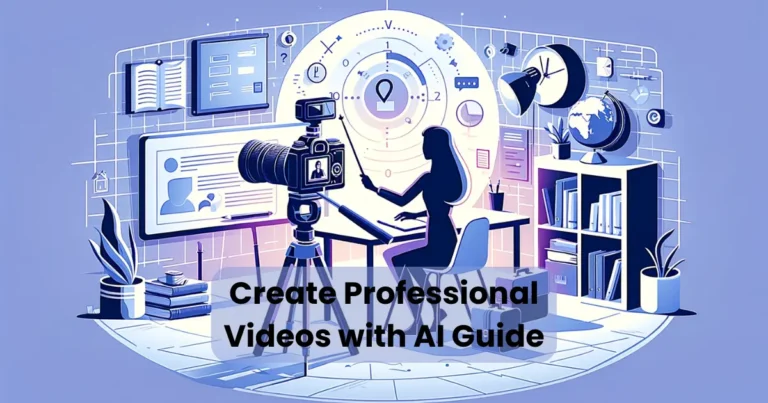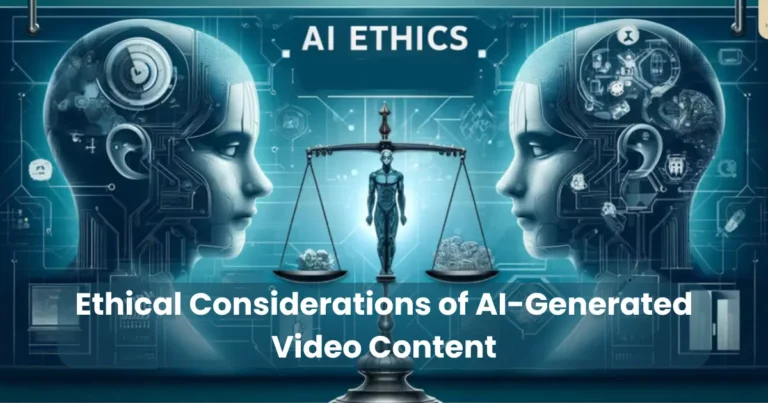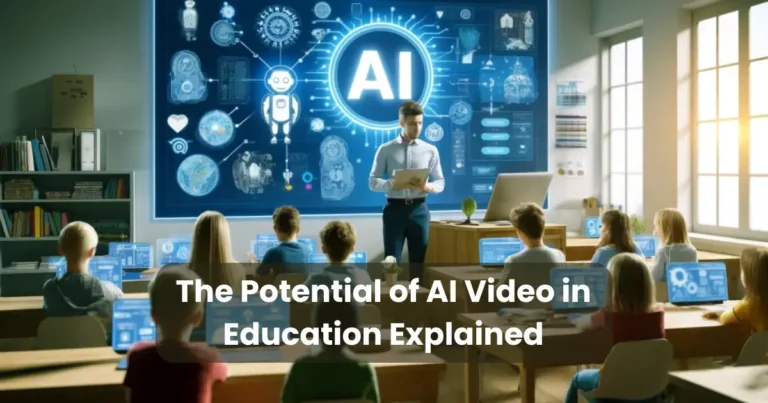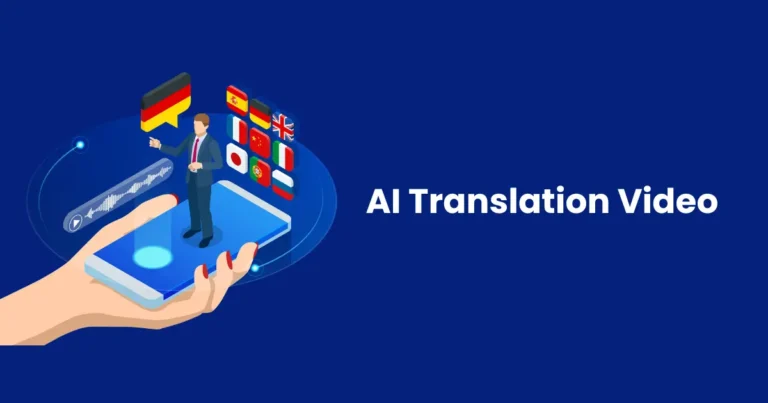How AI Creates Realistic Human-Like Avatars for Video

Contents
In the rapidly evolving world of digital content, how AI creates realistic human-like avatars for video has become a defining innovation. Through the power of artificial intelligence, virtual representations of people are now being generated with astonishing accuracy. Unlike traditional 3D modeling, which required manual input and time-consuming animation processes, AI-driven systems can analyze data, simulate facial expressions, and generate lifelike movements automatically. As a result, the boundary between digital avatars and real humans is becoming increasingly blurred, making this technology essential for industries such as film, gaming, education, and virtual communication.
The Evolution of Avatars in Digital Media
Before the emergence of AI, avatars in digital media were designed using basic computer graphics and hand-coded animation. These early models, often seen in video games and virtual chat environments, lacked fluid motion, emotional depth, and realistic textures. Their movements were rigid, and facial expressions—if any—were limited to simple presets.

Gradually, advancements in CGI and 3D rendering techniques allowed creators to develop more detailed and dynamic characters. Even so, these avatars still required extensive manual input from designers and animators. For a long time, realism remained a significant challenge due to the uncanny valley effect—a psychological discomfort users feel when avatars appear almost, but not quite, human.
However, this limitation has been dramatically reduced with the integration of artificial intelligence. AI has not only improved facial realism and movement accuracy but has also enabled avatars to adapt and react in real time. Today, avatars can be generated and animated automatically by feeding video, audio, or image data into machine learning models. Consequently, the entire process has been transformed from labor-intensive to intelligent and scalable, paving the way for immersive digital experiences across platforms.
AI Technologies Behind Realistic Avatars
To understand how AI creates realistic human-like avatars for video, it’s essential to explore the core technologies enabling this transformation. Multiple advanced AI systems work together to simulate lifelike visuals, speech, and behavior. Each technology plays a specific role in mimicking human attributes and actions with precision.

a. Generative Adversarial Networks (GANs)
Generative Adversarial Networks have been widely adopted to produce hyper-realistic facial features and textures. A GAN consists of two neural networks—a generator and a discriminator—that compete with each other. While one network generates new images, the other evaluates their authenticity. Through this continuous loop, the generator learns to create increasingly convincing human faces. As a result, avatars designed using GANs can possess skin details, hair texture, and eye movement that appear convincingly real.
b. 3D Modeling and Deep Learning
While GANs handle visual realism, 3D modeling is used to build the structural framework of the avatar. AI-enhanced 3D modeling tools allow deep learning algorithms to recognize facial geometry, skeletal alignment, and motion patterns. These models are trained on large datasets containing thousands of human faces and expressions. Consequently, the avatar’s shape, movements, and animations are automatically tailored to look and behave like a real human.
c. Voice Cloning and Lip Syncing
For a digital human to be truly lifelike, it must speak convincingly. AI has revolutionized this aspect by enabling real-time voice cloning. Through deep neural networks, AI can analyze a person’s voice and recreate it with subtle intonations, accents, and emotions. Simultaneously, lip-syncing algorithms match the avatar’s mouth and facial movements with the spoken audio. This is achieved using phoneme-to-viseme mapping, which allows the avatar’s lips to move naturally in sync with speech.
Together, these technologies form the backbone of the process behind how AI creates realistic human-like avatars for video, allowing creators to produce digital beings that are expressive, dynamic, and nearly indistinguishable from their real-life counterparts.
Motion Capture vs AI-Driven Animation
For decades, motion capture (mocap) technology has been the industry standard for creating realistic character animations. In traditional setups, human actors wear suits embedded with sensors that track their physical movements. These data points are then translated into 3D animations, allowing digital avatars to move with human-like fluidity. While this method produces highly accurate results, it is resource-intensive, requiring specialized equipment, controlled environments, and skilled performers.

In contrast, AI-driven animation offers a faster and more scalable alternative. Instead of relying on physical suits or studio setups, AI systems can analyze 2D video footage to infer 3D motion patterns. Using computer vision and deep learning models, facial expressions, body language, and even eye movements can be replicated in real time. As a result, the need for manual motion capture has been significantly reduced.
Moreover, AI can simulate physical dynamics—such as inertia, weight, and emotional expression—without actor input. This makes it ideal for applications where rapid avatar generation is required or where access to live performers is limited. Additionally, AI-generated animations can be edited and fine-tuned easily using software, allowing creators to iterate faster.
Ultimately, while motion capture provides unmatched physical accuracy, AI-driven animation delivers flexibility, efficiency, and scalability—especially when considering how AI creates realistic human-like avatars for video in modern production environments.
How AI Creates Realistic Human-Like Avatars for Video
Understanding how AI creates realistic human-like avatars for video involves analyzing a multi-step pipeline powered by various artificial intelligence models. These systems replicate human features and behaviors through learning from vast datasets. In doing so, AI ensures the avatars not only look human but also move, speak, and react convincingly.
a. Data Collection and Preprocessing
First and foremost, large datasets containing human faces, voices, and movements are gathered. These include video clips, facial scans, and audio samples. Afterward, the data is labeled and preprocessed to ensure accuracy in training. Faces are detected, landmarks are extracted, and gestures are mapped—laying the foundation for avatar realism.
b. Facial Mapping and Emotion Recognition
Next, the AI analyzes facial expressions and emotional cues using Convolutional Neural Networks (CNNs). These models break down facial features into measurable data points, which are then used to generate expressions on the digital avatar. As a result, the avatar can smile, frown, blink, or show surprise in response to user input or audio cues.
c. Speech Synthesis and Voice Animation
Simultaneously, speech synthesis models like Tacotron or WaveNet generate lifelike speech. These models are trained to mimic human prosody, intonation, and cadence. Then, lip-syncing engines adjust the avatar’s mouth and jaw movements based on phoneme alignment, enhancing believability.
d. Real-Time Rendering and Interaction
Furthermore, rendering engines apply skin textures, lighting, and shadows to the avatar. By integrating AI with real-time rendering tools like Unreal Engine or Unity, the avatar can respond dynamically during live interactions or pre-recorded sessions. Therefore, how AI creates realistic human-like avatars for video isn’t just about visuals—it’s also about interactivity and responsiveness.
e. Continuous Learning and Improvement
Finally, AI systems constantly improve over time. With reinforcement learning and user feedback, the avatar’s behavior, voice realism, and emotional intelligence become more refined. Each interaction is used to enhance future outputs, ensuring the avatar grows more human-like with experience.
This section reinforces the main keyword while demonstrating a full end-to-end view of the AI avatar creation process.
Benefits of Using AI-Generated Avatars
As digital environments become more immersive, the advantages of AI-generated avatars are becoming increasingly evident. When exploring how AI creates realistic human-like avatars for video, it is important to understand the unique benefits this technology brings across industries.

a. Cost and Time Efficiency
To begin with, AI-generated avatars reduce production time significantly. Traditional animation and live-action filming often require large teams, actors, and expensive equipment. In contrast, avatars can be created and deployed rapidly with minimal human intervention. Consequently, projects are completed faster and at a lower cost.
b. Scalability and Accessibility
Moreover, AI-generated avatars are easily scalable. Whether producing a single spokesperson for a brand or generating thousands of digital educators for a global learning platform, AI allows for mass production without sacrificing quality. Additionally, this scalability makes the technology accessible to small businesses and independent creators.
c. Personalization and Consistency
Another advantage lies in personalization. AI avatars can be tailored to match different ethnicities, age groups, languages, and emotional tones. Despite this variety, they maintain consistency in voice, behavior, and appearance—something difficult to achieve with human actors over long periods or across different locations.
d. Global Reach and Localization
In addition, AI avatars support multilingual communication. Voice synthesis and lip-sync tools can localize content across numerous languages, helping brands and educators connect with international audiences. Thus, how AI creates realistic human-like avatars for video becomes crucial in global communication strategies.
e. Safe and Controlled Production
Lastly, using AI avatars removes the risks associated with physical filming environments. Whether due to pandemics, travel restrictions, or safety concerns, avatars can be used in completely virtual settings. This guarantees production continuity without compromising health, privacy, or logistics.
Ethical Concerns and Deepfake Risks
While the benefits are substantial, it’s equally important to consider the ethical implications when discussing how AI creates realistic human-like avatars for video. As these avatars grow more indistinguishable from real humans, concerns surrounding misuse, deception, and privacy have intensified.
a. Deepfakes and Misinformation
To begin with, one of the most pressing risks is the misuse of AI-generated avatars for deepfakes. These are hyper-realistic but entirely fake videos often used to impersonate individuals, spread misinformation, or create non-consensual content. Because the avatars closely mimic real people’s facial expressions and voices, detecting forgery becomes increasingly difficult.
b. Consent and Identity Theft
Moreover, there are growing concerns around consent and digital identity. Individuals may find their likeness used without permission, raising questions about ownership and control. If AI systems are trained on public images or videos, personal data might be unknowingly used to generate avatars—creating ethical and legal challenges.
c. Trust and Authenticity in Media
Furthermore, as AI avatars become widespread in media, distinguishing between real and synthetic content becomes problematic. This erosion of trust can have long-term effects on journalism, education, and entertainment. Viewers may begin to question the authenticity of anything they see on screen.
d. Regulation and Transparency
For these reasons, transparency and regulation are crucial. Companies developing AI avatars must implement ethical guidelines, watermarks, or disclosure policies to inform audiences when avatars are used. Likewise, developers should ensure data protection compliance and offer opt-out options for individuals whose data may be involved.
Despite these challenges, understanding how AI creates realistic human-like avatars for video enables developers, users, and policymakers to engage in proactive dialogue—ensuring innovation moves forward responsibly.
Future Trends in AI Avatar Creation
As technology continues to advance rapidly, the future of digital representation is being reshaped in unprecedented ways. When considering how AI creates realistic human-like avatars for video, it’s clear that upcoming innovations will further blur the line between synthetic and real.

a. Real-Time Emotion and Sentiment Adaptation
To begin with, future AI avatars will likely become even more emotionally intelligent. Through real-time emotion recognition, avatars will adapt their facial expressions, tone of voice, and body language based on the viewer’s sentiment or engagement. This will be especially useful in fields like education, customer service, and therapy.
b. Hyper-Personalized Digital Twins
In addition, digital avatars are expected to evolve into hyper-personalized digital twins. These avatars won’t just look like their human counterparts but will also replicate their speech patterns, behaviors, and decision-making styles. As a result, the avatar could serve as a personal representative in virtual spaces, meetings, or customer interactions.
c. Integration with Virtual and Augmented Reality
Furthermore, seamless integration with VR and AR platforms will become more common. Avatars created by AI will populate immersive environments, allowing users to interact naturally through gestures, speech, and even eye contact. This will transform the way people communicate, train, and entertain in digital spaces.
d. Autonomous Interaction and Learning
Another significant trend is the development of avatars capable of autonomous interaction. Rather than relying solely on scripted input, these avatars will learn continuously from their environment and conversations. Consequently, how AI creates realistic human-like avatars for video will increasingly involve adaptive behavior and conversational intelligence.
e. Ethical AI and Explainability
Lastly, the future will demand greater emphasis on ethical AI. As avatars grow in realism and autonomy, developers will be encouraged—or required—to build explainable AI systems. These systems must clearly demonstrate how decisions are made and ensure that avatars are used in fair, transparent ways.
Conclusion
In summary, the journey of understanding how AI creates realistic human-like avatars for video reveals a dynamic blend of technology, creativity, and responsibility. From early facial mapping and voice synthesis to real-time rendering and autonomous interaction, AI has transformed the way digital personas are built and deployed.
Moreover, these advancements offer unprecedented benefits—from cost-efficiency and scalability to personalization and multilingual communication. Yet, alongside innovation comes the need for vigilance. As deepfake risks, ethical concerns, and regulatory gaps emerge, it is essential that creators, developers, and users work together to maintain transparency and trust.
Looking ahead, the future of AI-generated avatars appears both promising and complex. With continual progress in emotion recognition, virtual embodiment, and learning capabilities, these avatars will not only look real—they will behave, communicate, and connect with people in deeply human ways.
Ultimately, how AI creates realistic human-like avatars for video will remain a defining narrative in digital communication, entertainment, and beyond—reshaping how we interact in the virtual world.






